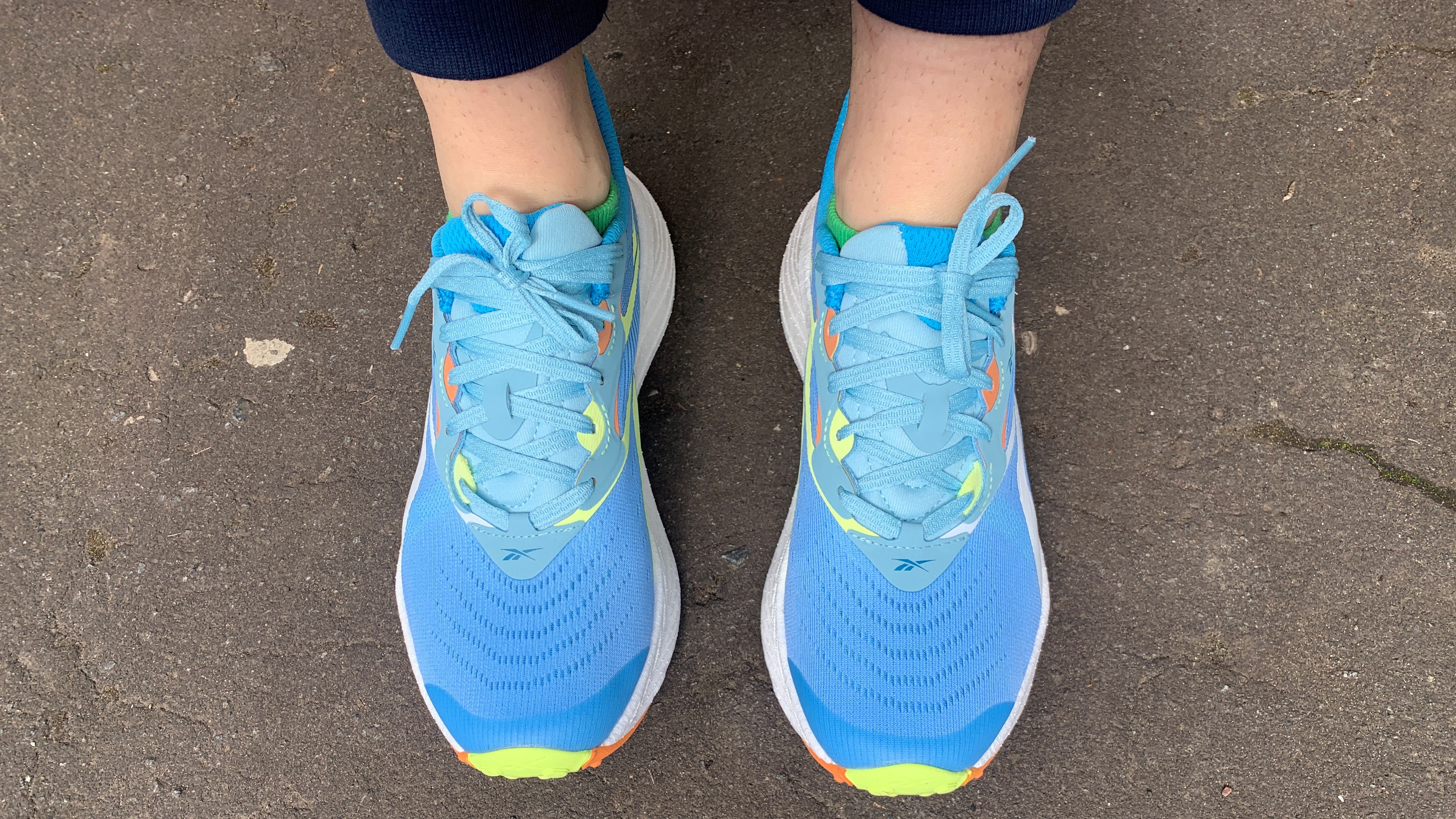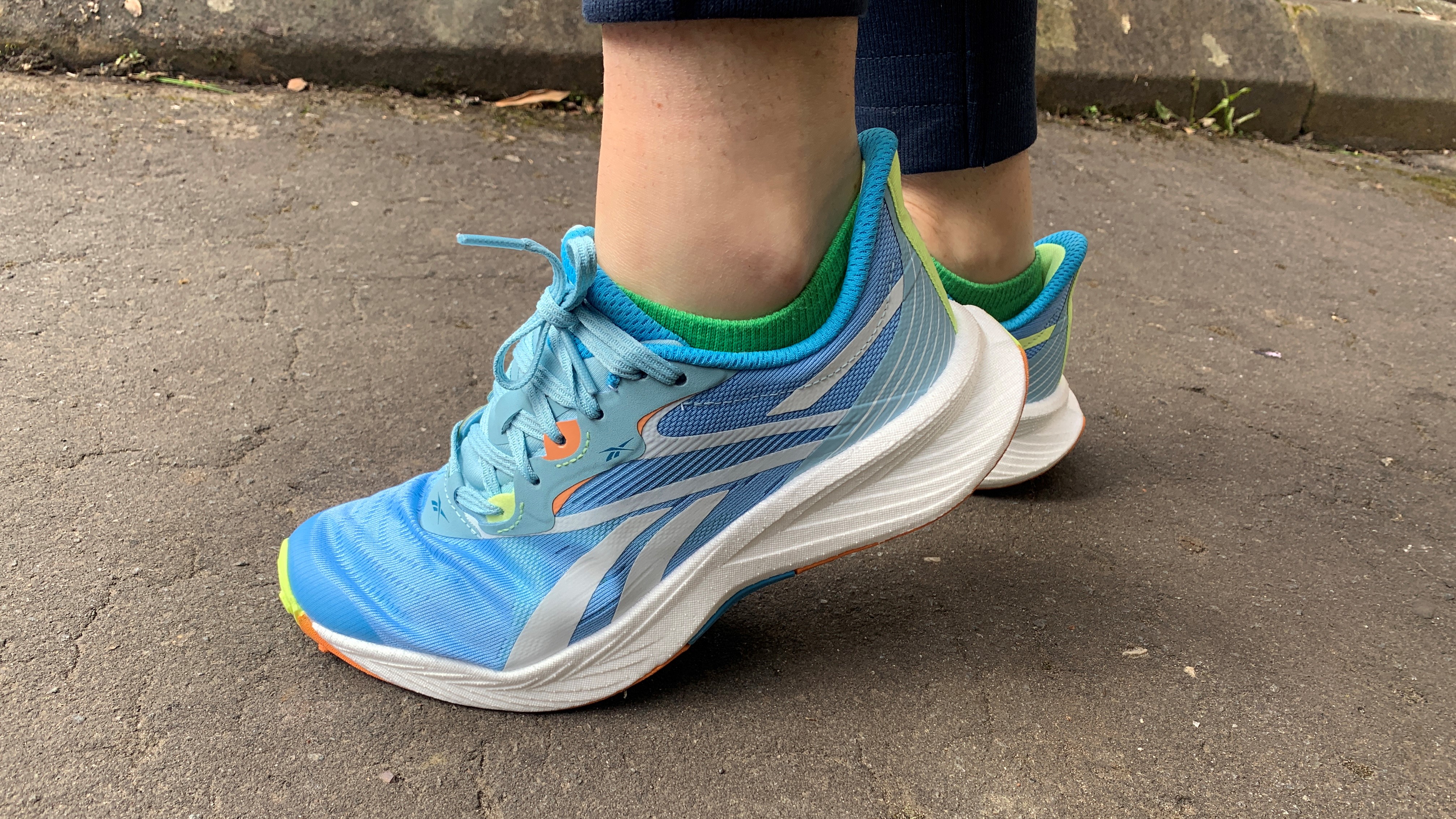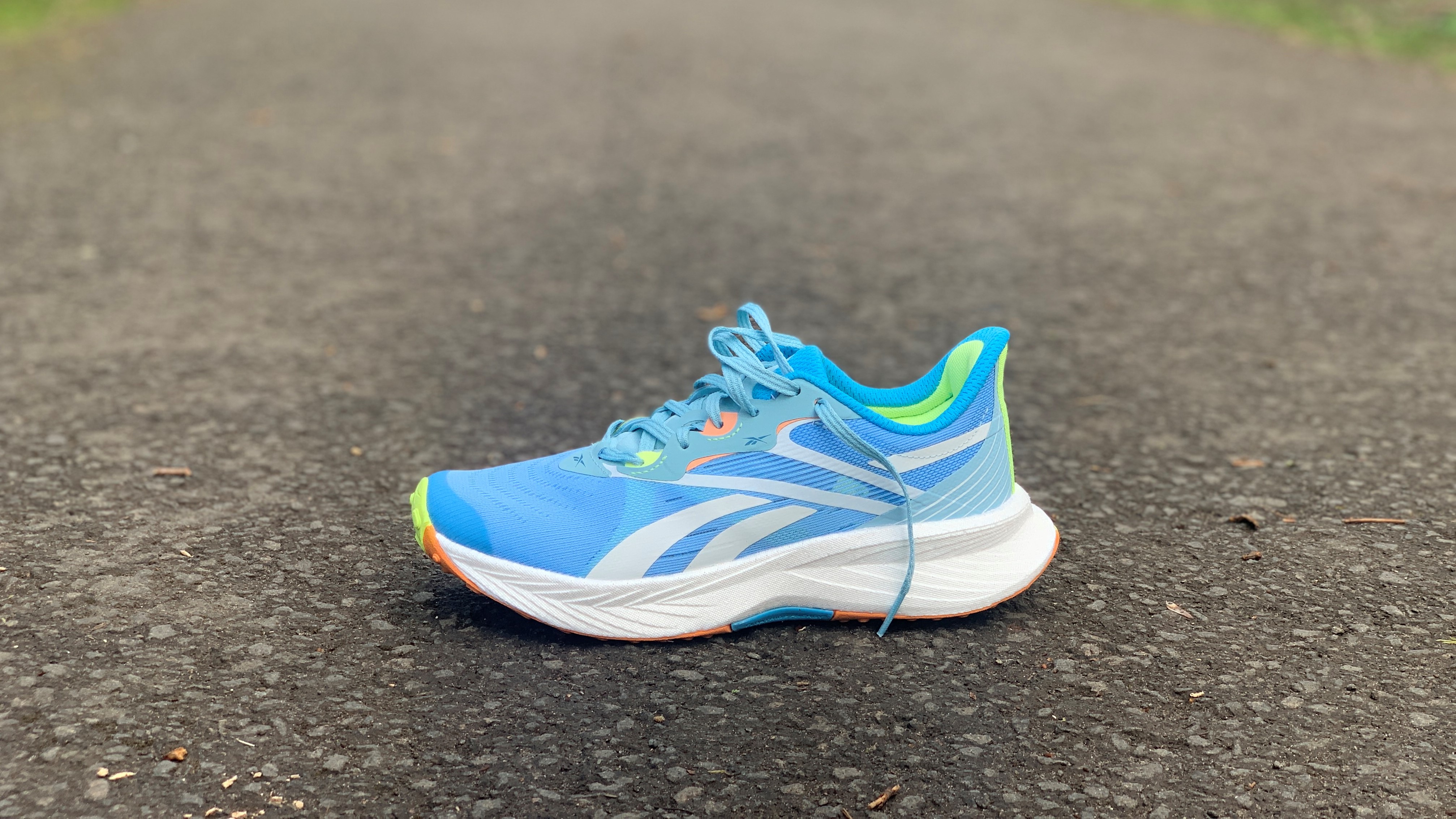Advnture Verdict
We like the firm cushion and superb lockdown of these road shoes for easy runs, but they’re not built for those with wider feet or longer runs
Pros
- +
Great lockdown
- +
Firm, rocker sole with medium stack and rock plate
- +
Great for heel strikers
- +
Breathable mesh upper
- +
Good arch support
- +
Grippy rubber sole
- +
Affordable
Cons
- -
Too narrow for some feet
- -
Require some breaking in
- -
Midfoot plate may not work for midfoot strikers
- -
Uppers are a little cheap looking
You can trust Advnture
Reebok Floatride Energy 5 running shoes: first impressions
The newest edition of the Floatride Energy series is somewhere in between a big, bouncy maximalist shoe and the soft, thin road running shoes of yesteryear. You’ve got a medium stack, by today’s standards anyway, with a firm midsole that gets softer towards the toe, making these ideal for heel strikers. The rocker shape of the sole and widened geometry help to ensure both a stable and reasonably responsive ride when you’re picking up the pace.
• List price: $110 / £85
• Gender specification: Men’s and women’s available
• Weight (per shoe): 210g / 7.4oz (women’s UK 4)
• Stack height: 27mm heel, 19 mm forefoot
• Drop: 8mm
• Colors: Core black, Pure gray, Steely blue, Ftwr white
• Best use: Road running
These shoes offer excellent heel lockdown and a snug fit around the midfoot, which may be too snug for wider feet but will come as great news for runners with narrow feet. The mesh uppers breathe well and dry quickly, while rubber outsoles provide good grip on slick pavement. These shoes come in at a good price and while they’re a little firm for long runs, they make a great, affordable option for many runners looking for decent cushion and support on easy days and speed runs.
Reebok Floatride Energy 5 running shoes: in the field

It’s been a long while since I ran on tarmac wearing shoes that weren’t big, bouncy shoes and these land somewhere nicely in between old school thin running shoes and today’s maximalist shoes. I’ve had these out for a few 10k runs in Pollok Country Park in Glasgow, where you’re on the pavement, but it feels like you’re out in the country. I liked some aspects of these shoes, but found them lacking in others.
Here’s how they performed:
Sizing and fit
I am a 3.5 UK but size up to a 4 in running and hiking shoes to give my feet room to swell and I’d say the 4 is true to size with just over a half inch to spare at the toes.
These fit really snugly around the midfoot, which helps with the excellent lockdown, but is definitely too narrow for anyone with wide feet. The toe box has decent room, though that’s helped by me sizing up. My toes curl up slightly, and I’m aware of them touching the top of the toe box when I’m standing. I can spread my toes quite a bit, but not completely.

Comfort and breathability
The snug fit, great lockdown and firm cushion means these feel really comfortable out-of-the-box, but once I started running in these I realized they needed a little breaking in. After my first five miles, I was feeling a little rubbing on the inner arches of my feet that went away after a few runs. The medium stack and cushioning is good for shorter runs, but I think the rock plate and stiff midsole means they’re not so comfortable for long days.
All the latest inspiration, tips and guides to help you plan your next Advnture!
The uppers breathe well and I’ve been quite happy temperature-wise wearing these on hot days.
Weight and responsiveness
These shoes probably fall on the lighter end of the spectrum, though I wouldn’t describe them as ultralight. The rocker sole and rock plate offer a fairly responsive ride too, but I’m a heel striker and I’m not sure this would be the case for midfoot strikers landing on the stiffest part of the shoe.
Grip and stability
The rubber outsoles are nice and grippy, even on the perilously slick moss that tends to cover Scottish pavements. The wider geometry of the heel ensures a stable ride even when crossing uneven pavement.
Grip and protection
I got to test these out in really muddy conditions really on a rolling trail in heavy rain and never once did I slip. They’re also great for grass and gravel. The uppers aren’t as stiff as some more technical trail runners, but they give enough protection for standard off-road routes.
Julia Clarke is a staff writer for Advnture.com and the author of the book Restorative Yoga for Beginners. She loves to explore mountains on foot, bike, skis and belay and then recover on the the yoga mat. Julia graduated with a degree in journalism in 2004 and spent eight years working as a radio presenter in Kansas City, Vermont, Boston and New York City before discovering the joys of the Rocky Mountains. She then detoured west to Colorado and enjoyed 11 years teaching yoga in Vail before returning to her hometown of Glasgow, Scotland in 2020 to focus on family and writing.


